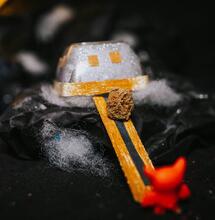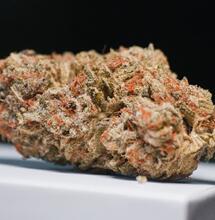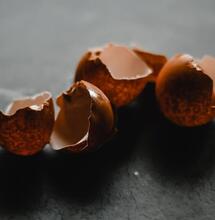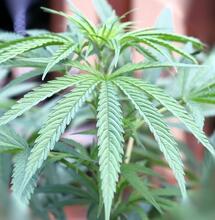Classic Strains: HinduKush
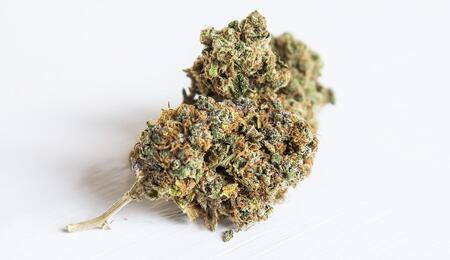
A unique anisette flavor and pungent, almost incense-like scent have resulted in Hindu Kush remaining one of the top Cannabis strains of all time - for some, the absolute best weed available. Her pure, relaxing-yet-clear indica effect and variety of breeder-friendly traits only added to the legendary status earned by this ancient mountain cultivar.
Hindu Kush provides one of the few modern tastes of ancient genetics that smokers can still enjoy today. This legendary cannabis strain tastes like licorice or anisette and offers a smooth, clear stoned effect.
Strain Name: Hindu Kush
Nation: Afghanistan/Pakistan
Status: Cultivar
Genetics: Pure indica
Origins: Hindu Kush mountain foothills
Flowering: 8 to 11 weeks
Outdoor Harvest: Mid-September through October
History of the Origins of Hindu Kush
The seminal Cannabis strain that hails from and is named after these verdant peaks is also revered on an almost spiritual level. Additionally, due to its antediluvian heritage, Hindu Kush is often referred to as the 'grandmother of all Cannabis' and the region itself is by many revered as the birthplace of weed.
Back in the 1960s and 1970s, group of intrepid breeders hand-selected seeds from ancient cultivars and clones from landrace varieties across the globe. As early as the mid- to late 1970s, Hindu Kush genetics were among the first indicas to be transported to North America, around the same time as Mazar-i-Sharif and Afghani #1. Traditionally, the flowering period of the trippy sativa and haze strains proved to be too long for many climates and too tedious for many amateur growers. Thus, indicas were grown instead or were bred into these tropic, sub-tropic and Equatorial genetics and the modern wave of weed hybrids gained its footing.
The four original, imported cultivar strains that kick-started the European Cannabis seed industry, Original Haze, Afghani #1, Skunk #1 and Hindu Kush, were established in California before being brought back to the Netherlands in the early 1980s, where they were able to be preserved for generations. Unlike the subsequent wave of female clone-only strains that swept the Dutch industry - Hash Plant, Northern Lights, G-13 and Big Bud - Hindu Kush and the others had been collected and shared as relatively stable seeds, allowing for careful selection of male pollen.
It is from those seeds of the original quartet of genes that hundreds of new strains were created for the Dutch Cannabis industry, one of the reasons that many strains popular in Western Europe taste, smell or look similar. The Kush, for example, could be either propagated in pure HK form, back-crossed or hybridized into some of the strains over which Kush lovers still salivate today, as it dosed the F1 offspring with a healthy amount of its most desirable traits. Many folks claim to possess true Hindu Kush but more likely have some sort of cross, in spite of its ubiquity and abundant original stock.
Hindu Kush Cultivation, Phenotypes and Effect
Hindu Kush tastes like Hindu Kush and nothing else. The spicy, licorice-flavored smoke of genuine HK buds is not only unforgettable but also incapable of being replicated or faked. It is not flowery or fruity, like Skunk-based strains. The flowers evolve from sweet-smelling to spicy and pungent throughout the maturation process. Add to all of that a smooth, clear and relaxing buzz with an extended yet predictable plateau - not the knockout punch that popularized the 60/40 and 50/50 hybrids - and there is no questioning the staying power of this strain.
Finished buds are dark green, coated with a dense, silvery frosting of resin glands, few top leaves and a high calyx volume dotted with minimal pistils - trimming is a breeze. Another hallmark of a true HK plant is that, when healthy, many of the top leaves will curl and twist in a manner that traditionally signifies that a plant is being burned by nutrients or heat, or suffering from other maladies.
While many growers favor indicas or hybrids due to their supposed ease of cultivation, the cultivation and requirements of plants in each category (indica, sativa or haze) may vary widely - which is exactly why people go to great lengths and expense to purchase reliable genetics.
True indica varieties are generally classified as being shorter, bushier and usually darker green than sativas, in addition to displaying wider 'finger' fronds on their palmate leaves and maturing faster than sativas. However, not all indicas flower in an extremely short time, are easy to grow, yield a bumper crop or get the consumer super-stoned. A genuine Hindu Kush plant defies these stereotypes, as the original genetics can be temperamental for the grower. Finicky with nutrients, the Kush's signature super-dark green leaves do require a lot more nitrogen, for example, than other indicas, yet caution should be exercised in order to prevent foliage burn. Some Kush cuts take ten weeks or more to flower properly, failing to mitigate the sacrifice of the grow space for those who prefer sativas but eschew them for allegedly faster indicas.
The HK's short nodal spacing still allows for good air flow but, due to rampant hybridization, some versions may retain a shorter flowering period and yet exhibit longer nodal spacing, resulting in taller plants than desired. However, widely-varying phenotypes may be chosen from in order to suit specific requirements. Optimal outdoor conditions may also lead to towering plants, so guerrilla growers or those with privacy concerns should remove the central cola and promote lateral branching (in lieu of one prized 'top bud'), which increases yield and allows for controllable and predictable plant size. Staking is another option, but base foliage should be trimmed away to prevent various molds and mildews from attacking the lush, dark green Kush leaves.
Also good to know, true Kush plants often display twisting or curling top leaves when healthy – a sign of stress or damage in most other strains.
Hybrids Related to Hindu Kush
Sensi Seeds still offers regular (?/?) Kush seeds that flower in forty-five to fifty days. The Pot of Gold from the Flying Dutchmen label combines two of the most influential strains in their truest form; an HK mother is teamed with a Skunk #1 father, preserving the anise flavor and shortening the flowering time, in addition to allowing the grower to select the perfect F1 to use as a mother plant. Master Kush, originally known as High-Rise, presents a similar genetic blend and was a Dutch coffeeshop favorite for decades. Across America, OG Kush is a common offering in dispensaries and pot shops.
Read more about other classic strains on Soft Secrets:










